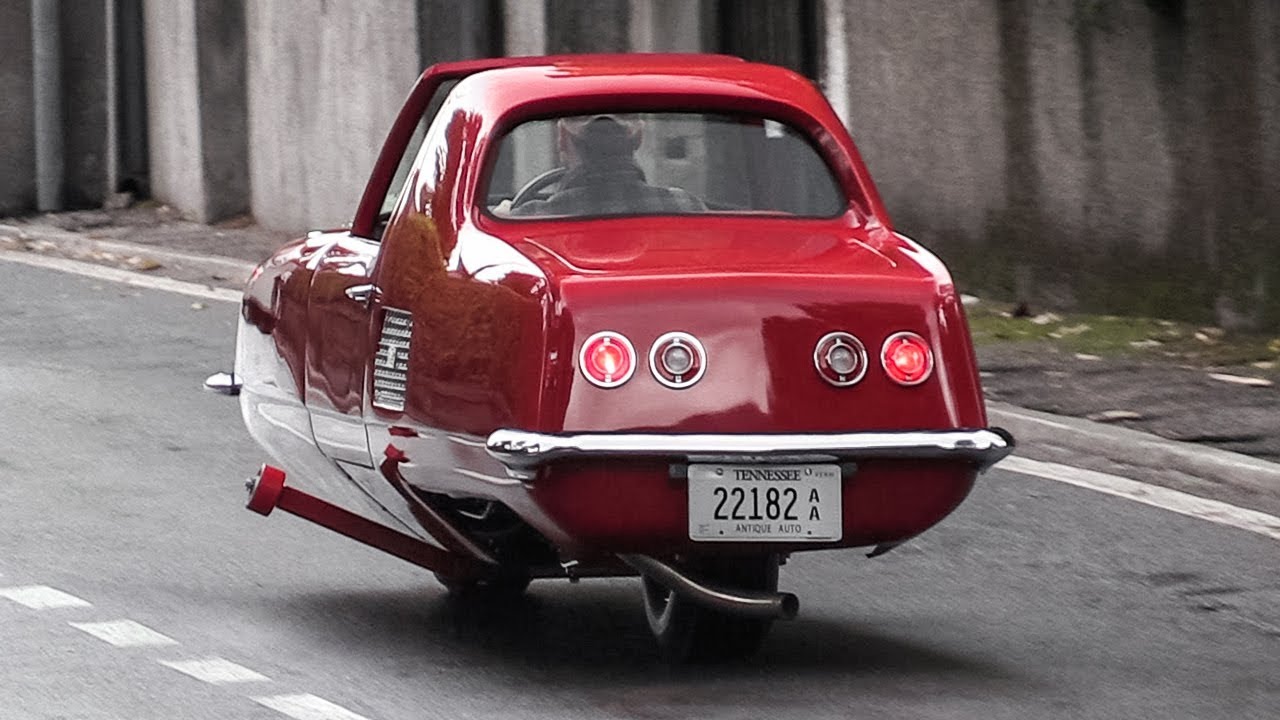The future is now, so where is my gyro car?
The 1960s were a wild time. I wasn’t alive then, but from the crazy contraptions and experiments the automotive industry was attempting, I can only gather it was an anything-goes type of situation. From the land of failed ideas comes the Gyro-X, and it’s awesome. So why can’t I have one, now that we’ve had 50 years to perfect the technology?
The Gyro-X was a creation from the combined brainpower of Alex Tremulis and Thomas Summers. Tremulis, a famous stylist even then, and gyroscope expert Summers paired up to create a two-wheeled vehicle to answer a question no one asked. That’s what forward thinkers do; beyond asking the question, they create the solution. I still don’t understand what the problem was, but the design aimed to revolutionize the future of transportation.
If you are going to make a claim like revolutionize, you have to go big. Or in this case, small. The pair looked to Summers’ gyroscope knowledge to allow the Gyro-X to shed two wheels, which allowed the car to be narrowed drastically. The running gear was lifted from a Mini Cooper S and supposedly made for a top speed of 125 mph, despite the mere 80 horsepower.
The engine is not the star of this show, though. After all, it’s called the Gyro-X, not the four-cylinder-X. Underneath the sleek bodywork was a 22-inch, hydraulically-driven gyroscope which stabilized the car and kept it rubber-side-down while being driven. It was a highly complicated system, which claimed to allow the vehicle to easily traverse 40-degree banked turns. Development stalled as Gyro Transport Systems, Incorporated went bankrupt before the car could reach a production-ready phase.
Yet the prototype not only survived, but found its way into the ownership of what would likely be the best home for such an oddity. Though improperly stored for years, the Lane Motor Museum found the derelict Gyro-X and set about returning it to a functioning car.
The key to that restoration was the one part that missing when it rolled into the Lane Motor Museum—the gyro. The original gyro was long gone, and an original-spec unit would get the car driving again, but the restoration crew knew 50 years on that they could do better. The restoration would simply come with a price tag.
The gyro that now resides in the Gyro-X was sourced from an Italian company that produced gyroscopes for yachts. The original gyroscope was 22 inches in diameter, but, thanks to modern tech, the new unit is just 17 inches with the same balancing power. This allowed the team a bit of extra room for packaging components that were not original to the car, but were necessitated by the modern gyroscope. Even with all the new sensors and modern balancing aids, the Gyro-X still struggles to function flawlessly.
Having seen it in person, it is amazing, even with a decent grasp on what is happening under the sheet metal. Surely, those unfamiliar with the car would be nothing short of stunned to see it rolling by, with a heavy whirring noise emanating from the long, red shell. I guess maybe I get it now why I can’t have one. Four wheels just make sense sometimes.


